Chapter 2. An Introduction to the AI for People and Business Framework
AI is a set of concepts, tools, and techniques that represents huge disruptive and transformative potential. Definition-wise, we can think of AI simply as intelligence exhibited by machines that can be used in a beneficial way (e.g., carrying out tasks, making decisions, assisting humans, saving lives). Specific highly beneficial and advanced applications include helping blind and visually disabled people “see” and cardiovascular disease assessment and prediction of risk factors from retinal scan images.
Developing and executing an AI vision and strategy guided by the AIPB Framework is the key to AI-based innovation that’s beneficial to both people and business; that is, innovation that creates better human experiences and business success. This framework and the information covered in this book will be valuable to any business interested in ensuring successful delivery of AI-based products with maximum value and benefits.
The goal of this chapter is to introduce the AIPB Framework and the more general for People and Business Framework (FPB) on which it is based. This chapter provides an in-depth discussion of the benefits of AIPB while briefly covering the other components that are built on top in a foundational way—in other words, assessment, methodology, and output components. We discuss those in much greater length in the next chapter.
Note that for the remainder of this book, I use the simplified and encompassing term “product” to describe any AI-based business, product, service, or solution.
A General Framework for Innovation
The AIPB Framework is a specific application of a more general FPB innovation framework that I’ve developed. FPB is more general because we can apply it to any form of innovation or emerging/state-of-the-art technology, such as Innovation for People and Business, Blockchain for People and Business, IoT for People and Business, and Robotics for People and Business.
The FPB Framework consists of a North Star, a benefits pseudocomponent, and four core components, as shown in Figure 2-1. The FPB Framework is unique in its North Star, benefits, structure, and approach.
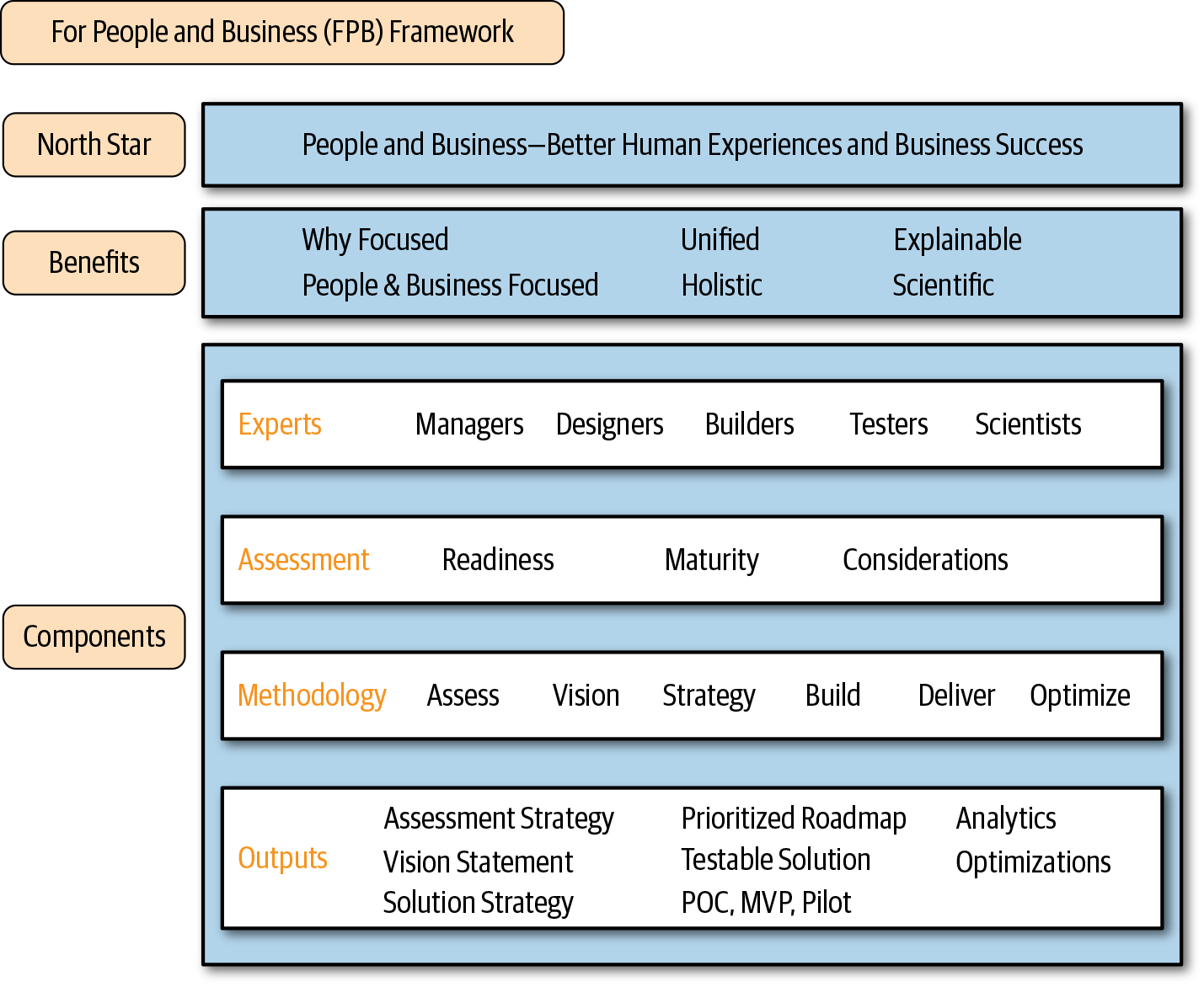
Figure 2-1. For People and Business Framework
As indicated by the top of the diagram, the purpose of FPB is innovation with both people and businesses in mind, and with the goal of creating better human experiences and business success. This serves as the North Star. The unique benefits of the framework are represented by the benefits pseudocomponent, as shown below the North Star, which we discuss in detail shortly.
The parts of this more general framework that are customized to AI in order to create the AIPB Framework are the experts involved (e.g., data scientists and machine learning engineers), the AI-specific assessments, the AI-specific details involved in the various phases of the methodology component (e.g, developing an AI vision and strategy), and some of the outputs (e.g., actionable insights, augmented intelligence, and automation). Blockchain for People and Business would analogously be customized with cryptography experts, different assessments, a different vision and strategy, and different outputs. The rest would be more or less the same. For the remainder of this book, we will refer only to AIPB, but you’re encouraged to keep in mind that the FPB Framework can be generalized to other forms of technology-based innovation.
You can say in the style of an elevator pitch that AIPB as an AI-based innovation framework is able to create better human experiences and business success (why) through its unique value proposition (North Star, benefits, and key differentiators), which requires the participation of experts working collaboratively through a unique process (assessment and methodology) in order to produce desired deliverables and outcomes (outputs).
The AIPB Benefits Pseudocomponent
Perhaps you’re wondering why I’ve included a benefits pseudocomponent. Normally, framework benefits are discussed when introducing or teaching about a framework, but not actually baked into the framework. The reason is that the benefits of the framework, like the framework’s North Star, are the why behind the framework; that is, the entire reason for using it, or put another way, its value proposition. What’s the point of remembering everything else in a framework or model if we don’t remember why it benefits us and why we should use it in the first place?
Before diving into specific AIPB benefits, let’s discuss the actual AI and machine learning process and related models. You might already be familiar with CRISP-DM, a common process used for data mining, data science, and machine learning. I’ve created my own process model that I call the GABDO AI Process Model, as shown in Figure 2-2, and which I cover in depth in Appendix B.
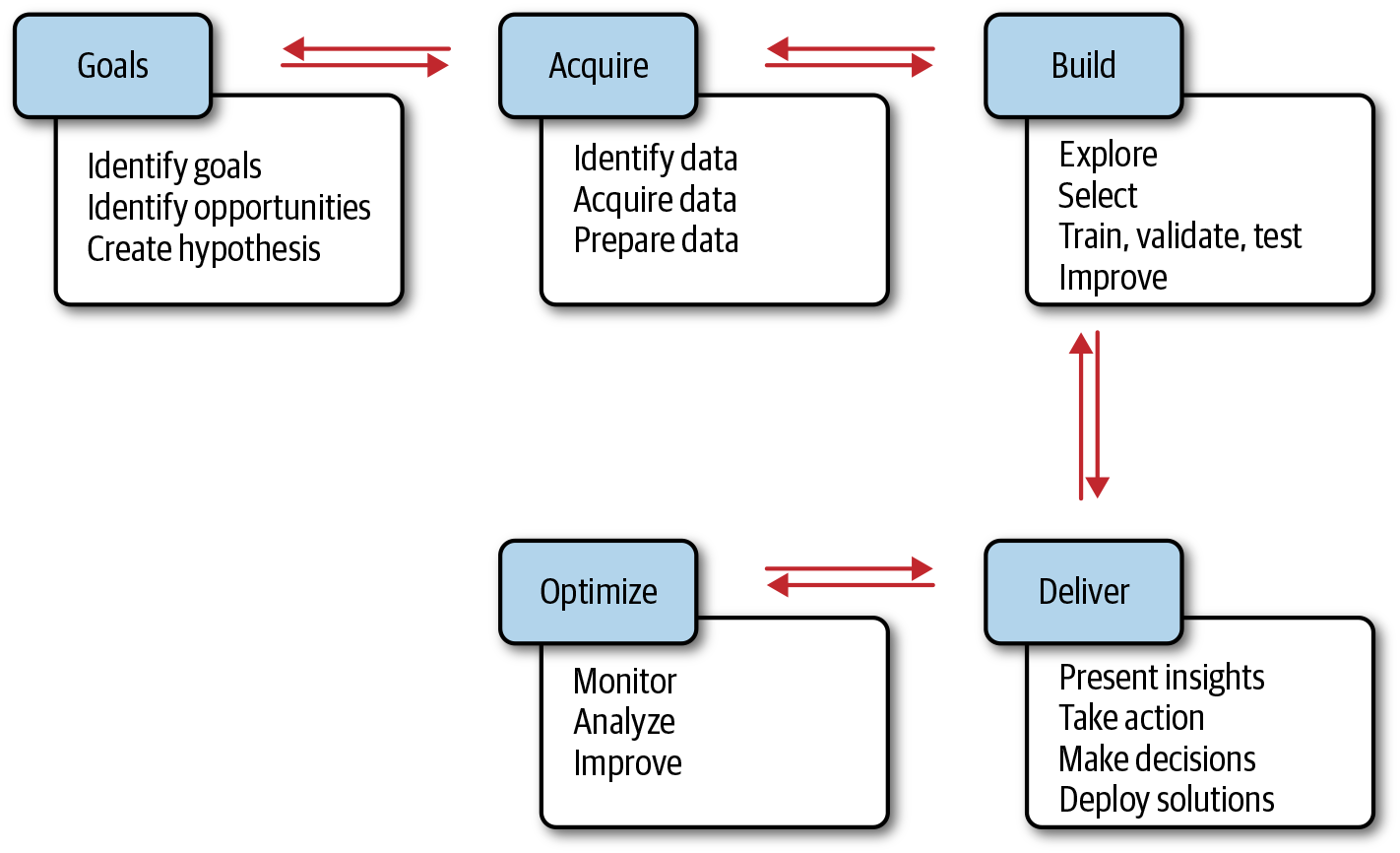
Figure 2-2. The GABDO AI Process Model
Most machine learning process models, including this one, omit the work that should occur upstream; that is, the definition and development of an AI or machine learning vision and strategy. At best, some of these models mention the need to ask the right questions and identify goals and opportunities, but not much beyond that. Most executives and managers that I’ve spoken with really struggle with knowing how to develop a real-world applied AI vision and strategy, and to figure out where to start. They’re not particularly concerned with tactical-level, machine learning processes such as CRISP-DM and GABDO, and rightfully so. A primary goal of mine when I was developing AIPB was to fill this upstream gap. AIPB does that, and much more as you’ll see.
Existing Frameworks and the Missing Pieces of the Puzzle
One way to view AIPB’s unique approach is by comparing it to most existing business and product development frameworks, models, and methodologies. There are many popular frameworks that are used to help develop a business strategy, maximize product development success, and/or facilitate the innovation processes. I break these into the following process categories (with some of my recommended specific methods), which, moving forward, we’ll refer to as the AIPB Process Categories:
-
Assessment (e.g., gap analysis, competency analysis)
-
Ideation and vision development (e.g., design thinking, brainstorming, five whys)
-
Business and product strategy (e.g., Strengths, Weaknesses, Opportunities, and Threats [SWOT], Porter’s five forces, cost-benefit analysis (CBA), the Product-Market Fit Pyramid)
-
Roadmap prioritization (e.g., cost of delay, CD3, Kano model, importance versus satisfaction)
-
Requirements elicitation (e.g., design thinking, interviews)
-
Product design (e.g., design thinking, UX design, human-centered design)
-
Product development (e.g., Agile, Kanban, GABDO, continuous delivery)
-
Product evaluation, validation, and optimization (e.g., minimum viable product [MVP]/prototyping, success metrics, key performance indicators [KPIs], usability testing)
All of these process categories and specific methods can be very useful (including in AIPB, which is meant to be modular!), and many of them share common gaps that AIPB intends to fill. These gaps include the following:
-
Not why or goal focused (focused more on details, how, and what)
-
Business focused (instead of people focused)
-
Siloed (involving a limited group of participants and breadth of expertise)
-
Not holistic (focused on a subset of a much larger process)
-
Documentation focused (bullet point lists, filled-out canvases, white boards)
-
Not explainability focused (do not help generate a shared vision and understanding across all stakeholders)
-
Deterministic (assumption that everything can be known and planned on in advance)
-
Assembly focused (simply build the solution by following a linear process or set of steps to get to the end result)
AIPB fills all of these gaps as a why-driven, people- and business-centric, unified, holistic, collaborative/interactive, and scientific innovation framework that provides many significant benefits as a result.
AIPB Benefits
My ultimate goal for AIPB is to help people understand how to build an AI vision and strategy, apply AI to real-world use cases, and, finally, execute their AI strategy for maximum success. As you’ll see later in the book, AIPB also helps guide gap identification as well as plan for pursuing AI initiatives by conducting critical assessments around AI readiness, maturity, and other key considerations.
AIPB fills gaps by providing the following benefits:
-
Why focused
-
People and business focused
-
Unified and holistic focused
-
Explainable focused
-
Science focused
Let’s discuss each of the unique benefits of AIPB and how they provide an end-to-end foundation for AI-based innovation. These ideas will be developed further throughout the book.
Why Focused
Traditional approaches to understanding markets and opportunities consist of initial market research, but I would argue that you’re not innovating enough if you’re relying mostly on market research. People don’t know what they want, and the market’s only going to tell you what’s already out there.
Steve Jobs knew this and continually created brand new products with features that people didn’t know they wanted until they were available to them. How did he and others do this? By understanding problems and needs, or in other words, the why. I’d therefore highly recommend focusing primarily on problems and needs research. This presents a better path to true innovation and the creation of truly great products.
The why should be universally understood by everyone involved; in other words, by all stakeholders. In businesses, people and departments are usually incentivized through different goals and KPIs. True innovation requires a North Star why to be established and a shared vision and understanding among everyone regardless of the goals and incentives of specific people or departments.
The why should help develop a vision and strategy that can turn it into reality. Many existing frameworks are focused on creating bullet point lists or filling in canvases on paper or in digital form, including some canvas-based AI and machine learning frameworks.
Don’t get me wrong—all of these frameworks can be amazingly helpful for guidance, but unfortunately they share some of the same characteristics that I’m proposing we should change. Specifically, they’re not particularly focused on vision or strategy development.
People and Business Focused
Most business frameworks focus mostly on the business side of things. AIPB focuses on both people and business at the same time. People are critical to the success of any business or product, which is something that I discuss in depth throughout this book.
Some frameworks and companies have begun to recognize this and use terms like customer centric and customer focused. Some even say that we’re now in the age of the customer. This a great step in the right direction, but there are two things that AIPB improves upon here.
First, not every person that realizes value from a product is a customer. People can be users or benefactors, too. Also, the word “customer” sounds like a word attributing dollar signs to people. How about we just say people centric or people focused, which is exactly what AIPB aims to do.
People and business are not mutually exclusive and don’t represent a zero-sum game. People and businesses have different goals, which can usually be achieved at the same time. A great product should be able to achieve goals for both people and businesses simultaneously, and AIPB shows us how to do that. AIPB doesn’t trade focus from business to people, and vice versa. AIPB focuses on developing a vision and strategy for both.
Unified and Holistic Focused
Most business and innovation frameworks involve a limited group of people and therefore a limited breadth of expertise. They also tend to focus on a single process or subset of processes that are part of a larger whole. AIPB is unique and improves on that by creating a unified and holistic framework that drives a powerful and collaborative approach to innovation. Let’s discuss both the unified and holistic aspects of AIPB now.
AIPB is unified in that it demands that people with appropriate expertise collaborate as needed for specific AIPB phases, and this must not only include senior executives and line-of-business owners. Great executives and managers have a lot to offer in terms of leadership, strategy, guidance, and decision making, for example, although they often become somewhat removed from the specific expertise required in certain subject matter areas, including knowing about and understanding many of the key considerations that should be taken into account. Given that, the right people should be involved regardless of job level. Note that I used the word collaboration and not consensus. There is a huge difference for me, and I discuss it later in the book.
Some of the frameworks listed earlier in the chapter assume a group of people with all required expertise will come together at the same time to implement the framework (e.g., to fill in a canvas). Others do make a point, however, to emphasize the need for cross-functional collaboration and suggest the type of people that should be involved, but the framework might focus on only a subset of the overall innovation process.
AIPB recognizes five groups of people in a business that should be represented when using the framework for innovation: managers, designers, builders, testers, and scientists. Figure 2-3 shows this.
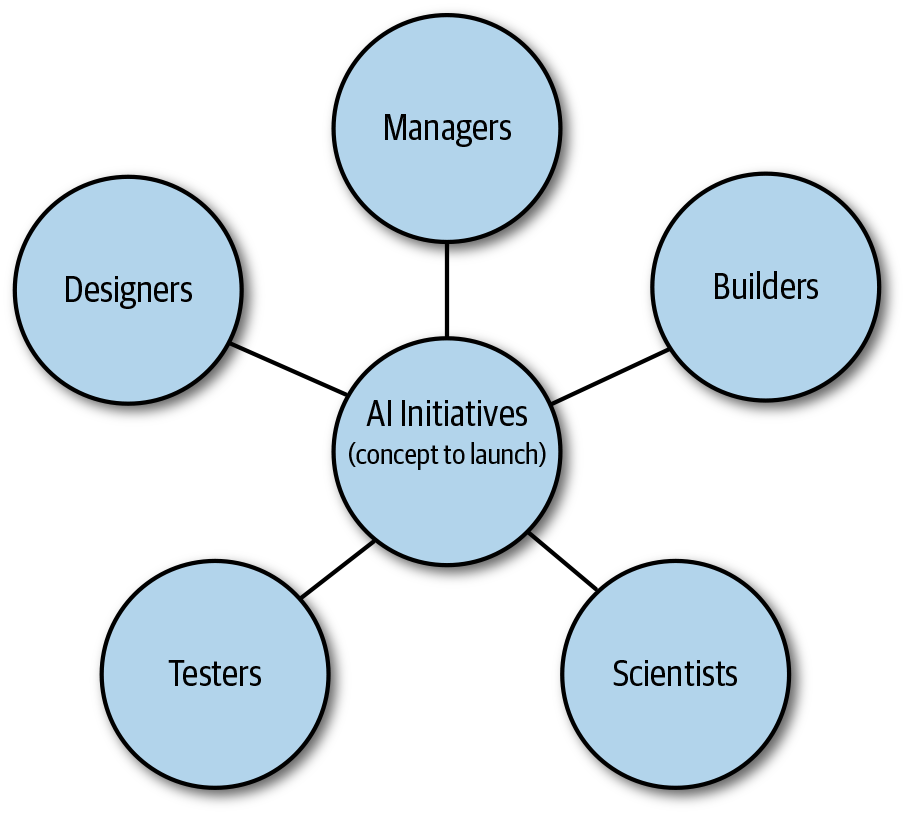
Figure 2-3. AIPB Experts
AIPB is also a holistic framework. Rather than focus on one phase or a subset of phases in the innovation process, AIPB aims to be holistic and end to end. AIPB additionally includes the following framework components, categories, and phases, with each phase of the methodology component having its own respective outputs. Figure 2-4 shows the three Assessment component categories, and Figure 2-5 shows the Methodology component phases and outputs per phase.
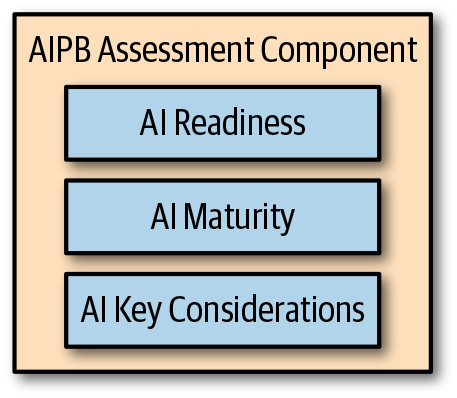
Figure 2-4. AIPB Assessment Component categories
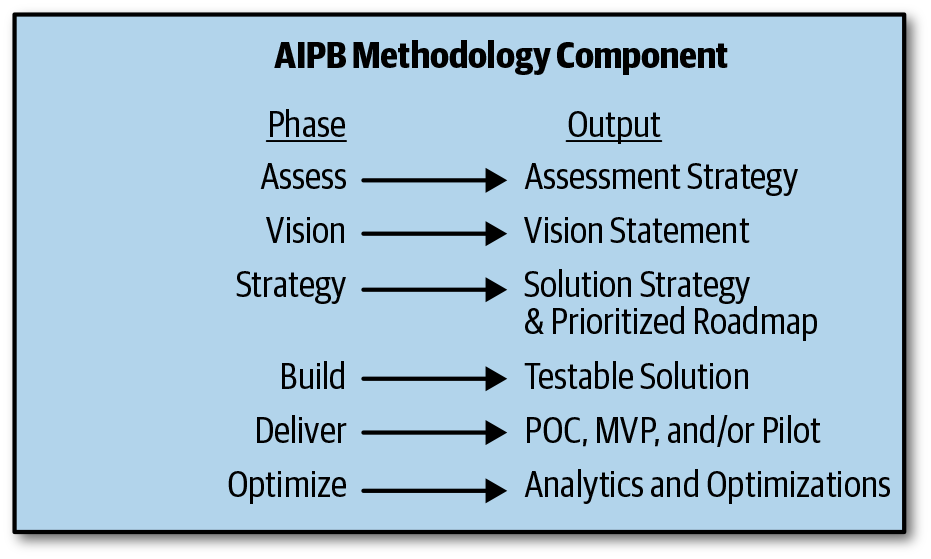
Figure 2-5. AIPB Methodology Component phases and outputs
In my opinion, an innovation framework must include all of these components and phases to be considered holistic. A good analogy for business is executive leadership in a company; for example, the C-suite. C-level executives are collectively tasked with having a big picture (holistic), end-to-end view of the company in terms of finances, operations, and both with respect to time; that is, developing a deep understanding of the company’s history, current state, and future (e.g., goals, initiatives, investments, and strategy).
AIPB similarly has a holistic view of the entire innovation process end to end, including the direction it should take (vision and strategy) and overseeing the actual execution while also planning for the future. AIPB can also incorporate existing frameworks and models where appropriate and beneficial. It is meant to be modular and not overly prescriptive in that sense, in the same way that the CTO of a company does not necessarily dictate what continuous integration framework software developers must use.
Explainable Focused
Explainability is becoming very important when it comes to AI and machine learning, and rightly so. Both can be quite opaque in terms of how they work and what the results mean. Making AI more explainable is a great goal, and the outputs of AIPB should also be explainable.
One of the downsides of canvas-based frameworks is that the focus is on writing text in boxes and creating bullet point lists. Usually this content requires further explanation to those who were not involved in the process and/or to those less familiar. It is unlikely that you could hand a filled-out canvas to someone that did not participate in the process and have them fully understand what it contains, its value, and its implications just from a quick read. AIPB produces explainable output that should not require much further explanation.
I put a very high premium on the why of everything, as well as on generating a shared vision and understanding among all key stakeholders. I think that the output of an innovation framework should help facilitate this in a highly explainable way.
Science Focused
AIPB is science focused given that innovative, emerging, and state-of-the-art technologies such as AI and machine learning are key ingredients and are by nature exploratory and experimental. This matters because these are fields based in statistics and probabilities, or put another way, in some form of uncertainty. This means that the entire process of planning around and using AI techniques is largely nondeterministic and therefore best represented by the concepts of science and processes such as the scientific method.
Why is this a benefit of AIPB? It’s a benefit because of expectation management; that is, it helps set appropriate expectations. There are certain laws and theorems that essentially prove that things like the best algorithm, exact data, best data features, and best model performance can’t be known in advance. AIPB recognizes this and helps set expectations accordingly.
Summary
In my opinion, the purpose of innovation is to benefit both people and business in new and powerful ways. This is accomplished by creating and executing a technology-based vision and strategy around real-world solutions that make these benefits a reality. In addition, generating a shared vision and understanding among key stakeholders along with proper expectation management is key. This can be difficult to accomplish with some of the existing frameworks due to the gaps outlined in this chapter.
The FPB and more general AIPB Frameworks represent a unique and powerful approach to innovation that is focused on benefiting people and businesses alike in order to create better human experiences and business success. AIPB fills the gaps of most existing business and innovation frameworks, and is unique in its guiding North Star (people and business), benefits pseudocomponent, and four core components, which we cover next.